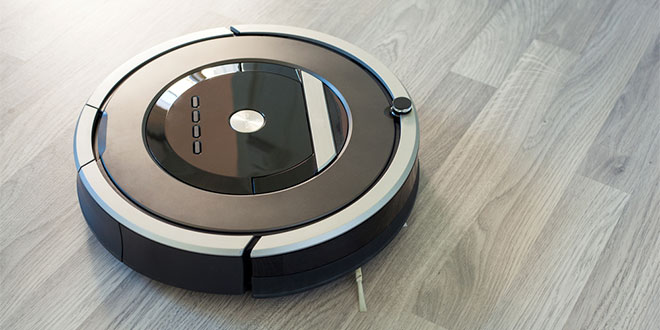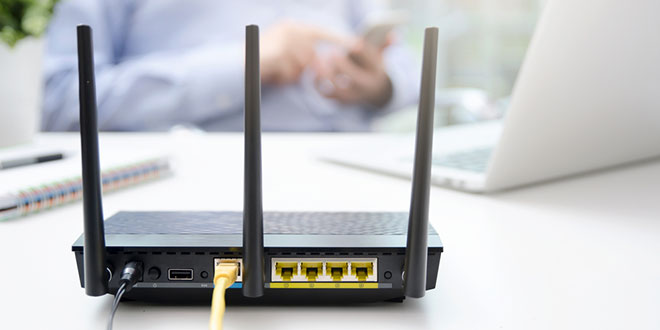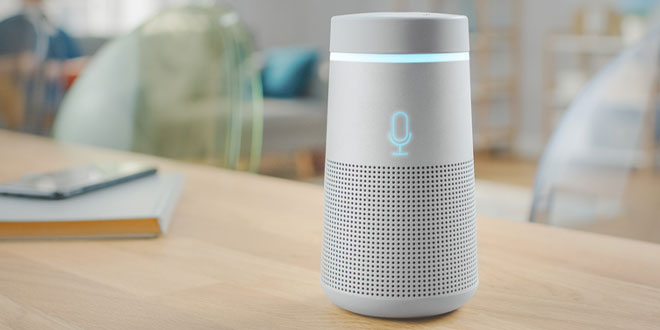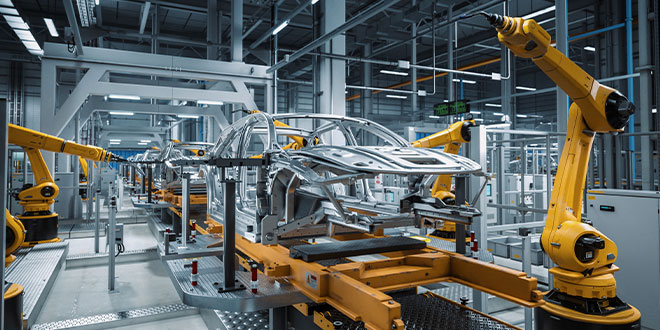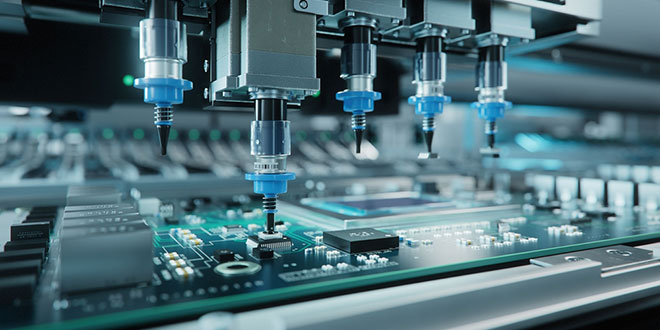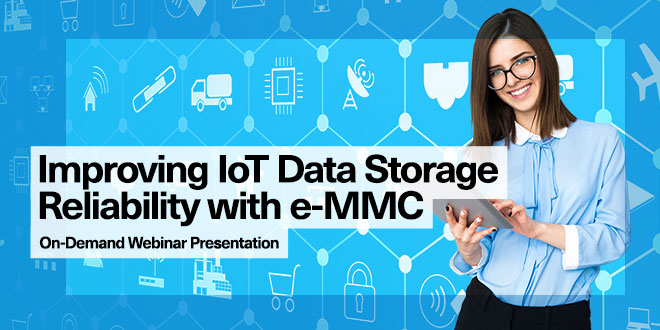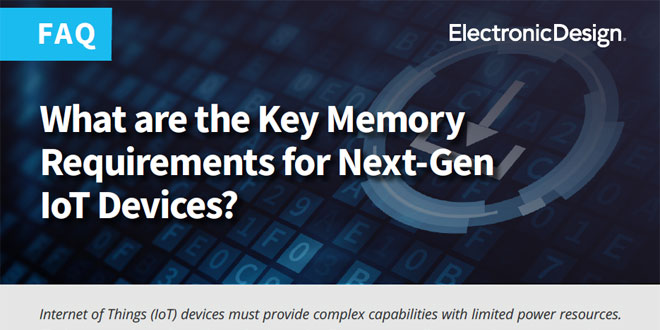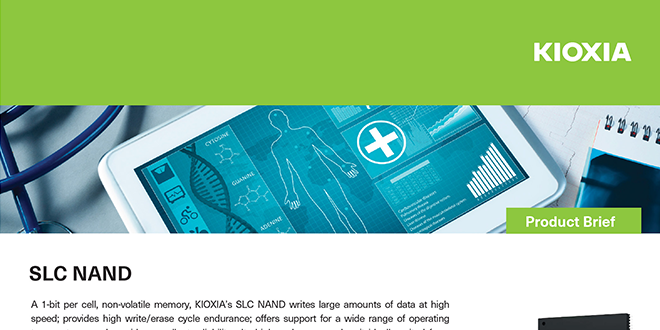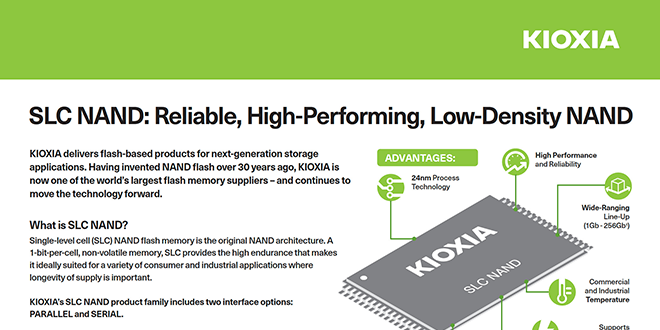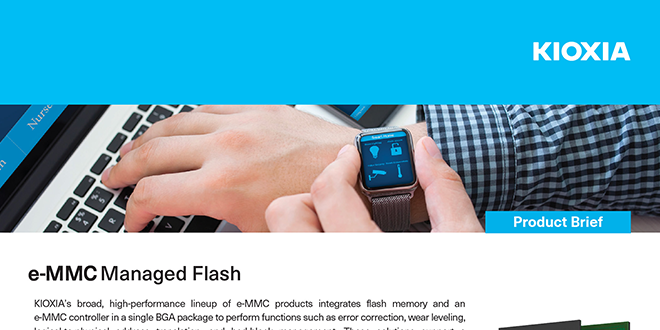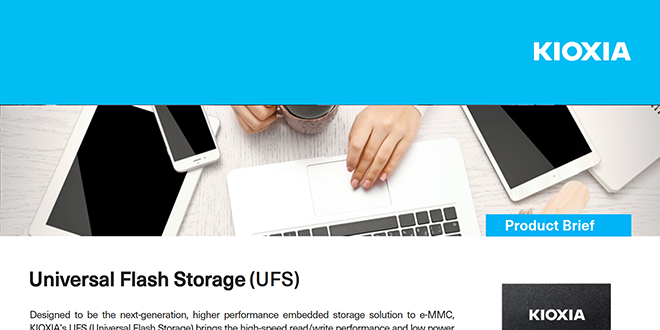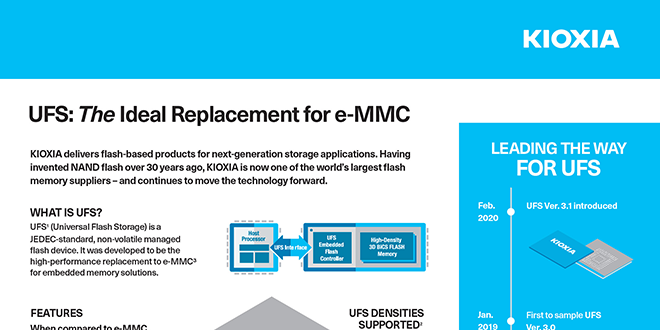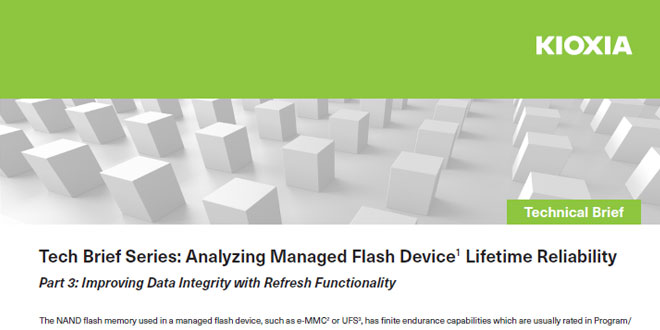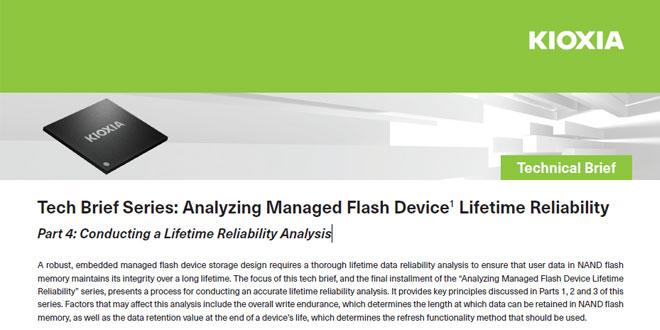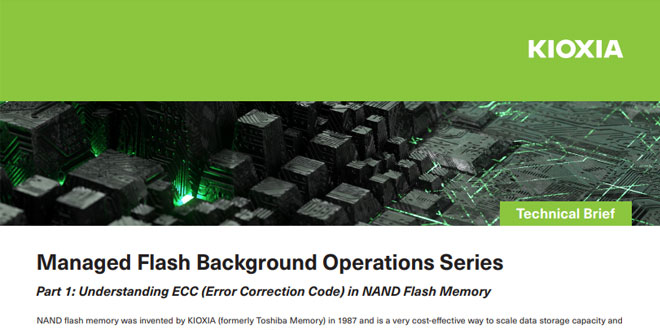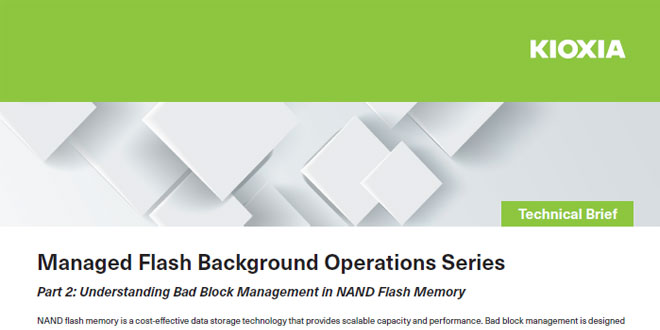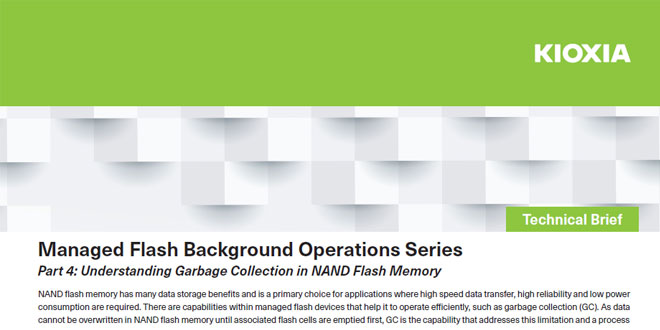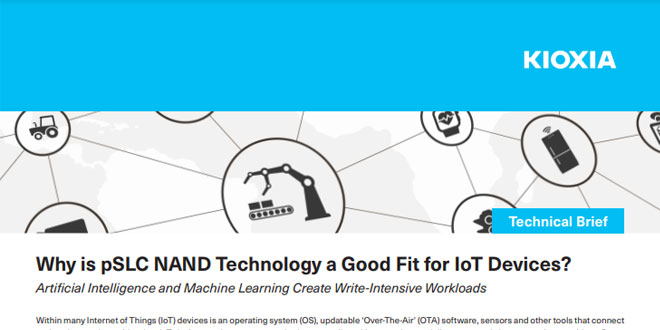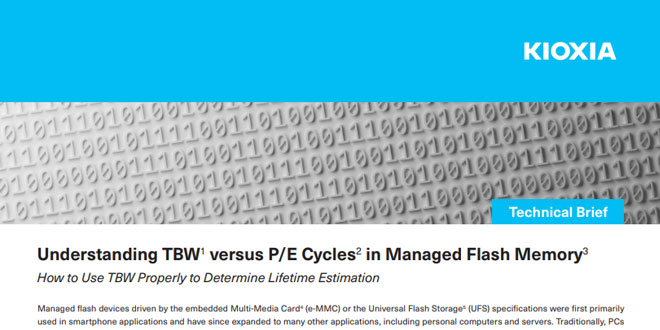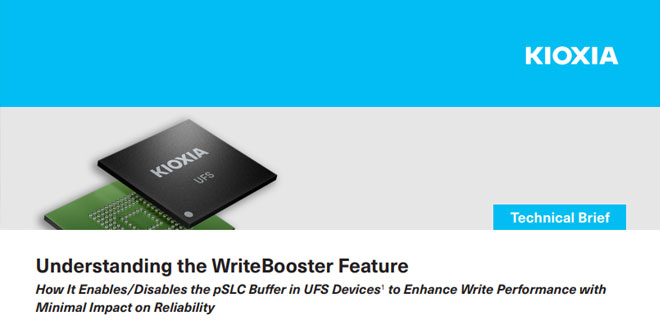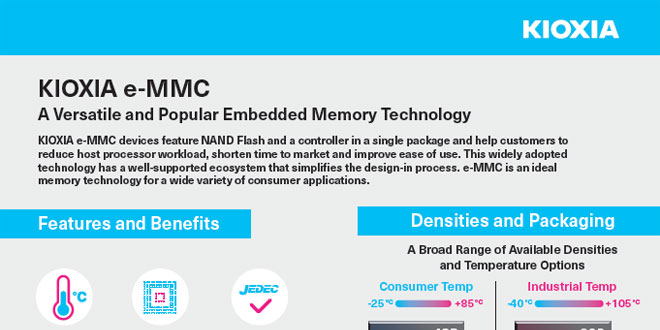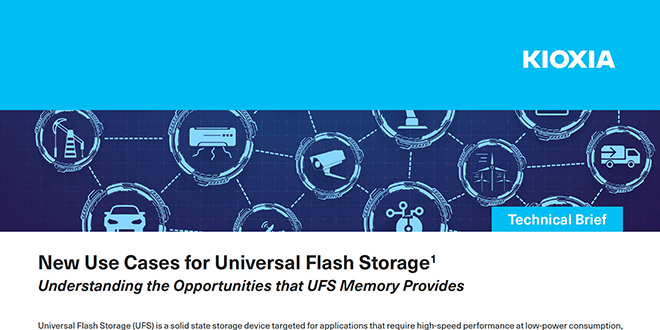Please select your location and preferred language where available.
KIOXIA Flash Memory Powers IoT Applications
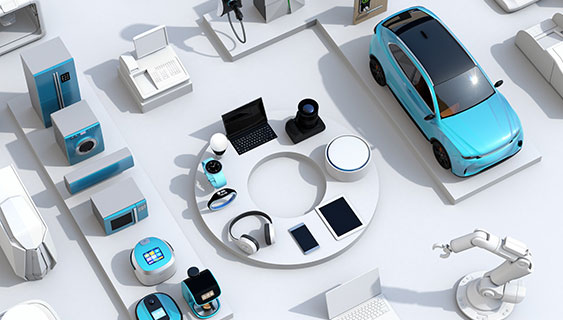
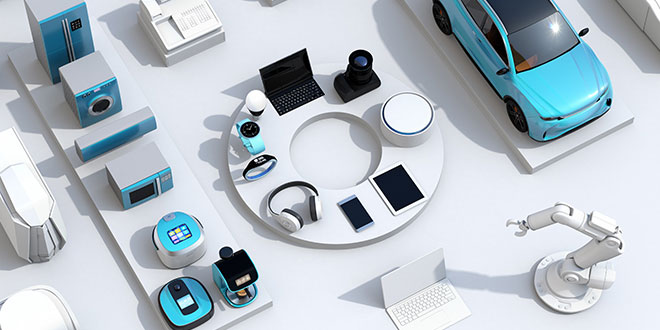
IoT Segment
Engineering Resources
Flash-Forward: Making Next-Gen IoT Devices Possible
KIOXIA offers a broad range of NAND flash memory technology to support the growing IoT market. As the inventor of flash memory, KIOXIA’s expertise in flash engineering has led to products that can help solve many of the most challenging design demands for the next generation of IoT devices. These devices require small packages with high memory densities – and KIOXIA provides these important features.
KIOXIA is pushing the IoT forward with a vast range of densities, high reliability, extended temperature ranges, low power consumption and a technical support system that is one of the best in the market today. Whether it is a wearable device to monitor exercise and sleep patterns, a smart TV or a smart parking meter that manages financial transactions in real-time, KIOXIA has the right memory solution for the development and delivery of the most advanced IoT technology.
KIOXIA IoT Products
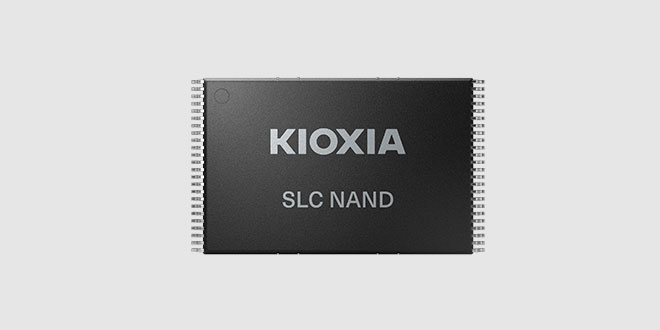
SLC NAND
- High read/write performance, reliability, and endurance
- Offered in low capacities down to 1Gb and up to 256Gb
- Low power consumption
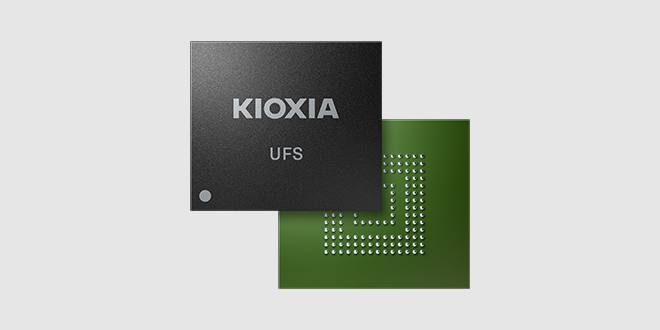
UFS Managed Flash
- High performance up to 46.4Gbps
- High capacity offerings from 32GB up to 1TB
- KIOXIA proprietary controller manages NAND reliability, pSLC partitioning, and other functions
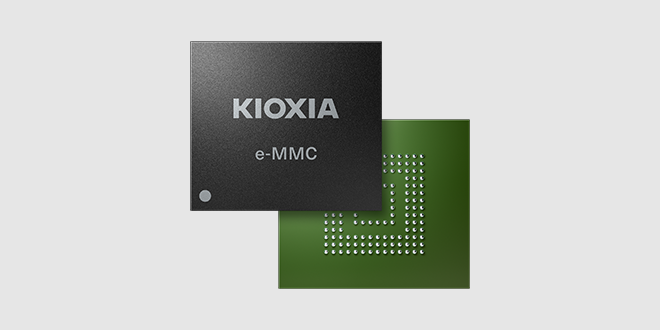
e-MMC Managed Flash
- Controller manages NAND reliability and other functions
- Support pSLC mode for enhanced endurance and reliability
- Supports low capacities down to 4GB and up through 128GB
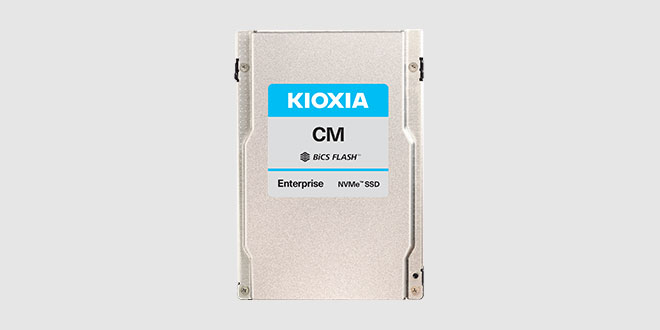
Enterprise SSD
- High performance with dual-port SAS and PCIe® Gen 5 / NVMe™ technology
- Supporting multiple form factors including U.2, U.3, and EDSFF (E3.S)
- Offering capacities from 800GB up to 30TB
- Supporting hardware level security including SIE, SED, and FIPS encryption
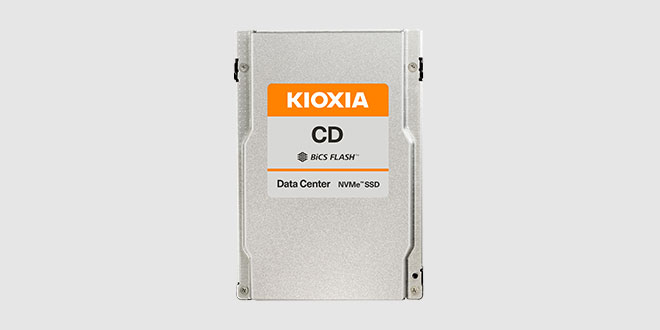
Data Center SSD
- Offering high performance NVMe™ flash storage (single port)
- Offering capacities from 800GB to 15TB
- Supporting multiple form factors including U.2, U.3, and EDSFF (E1.S)
- Supporting hardware level security including SIE and SED
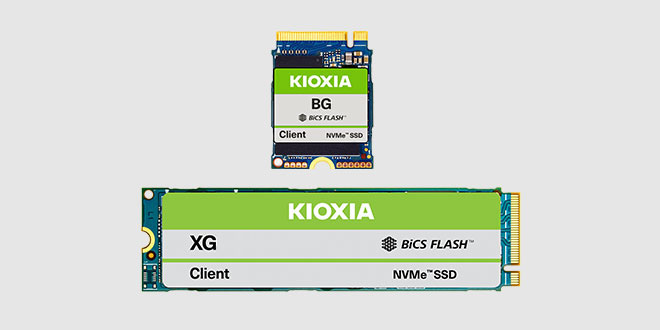
Client SSD
- Supporting NVMe interface speeds up through PCIe® Gen 4
- Supporting multiple M.2 form factors
- Capacity offerings of 256GB up to 4TB
- Offering extended temperature, -40°C to 85°C
Explore IoT Applications and Suggested KIOXIA Flash Memory
Smart Home IoT Applications

The promise of the Smart Home is to enable greater levels of automation for a better quality of life and higher levels of energy efficiency. The wide range of Smart Home devices today are designed to improve security, enhance comfort, and promote overall wellness.
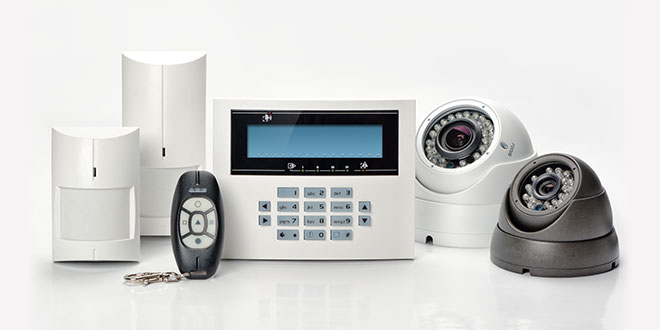
Smart Security
- Records video 24/7 at 1080p and 4K
- Monitors doors/windows/rooms
- Supports burst or constant video
- Data aggregated at a central hub
Typical Storage Devices Suggested
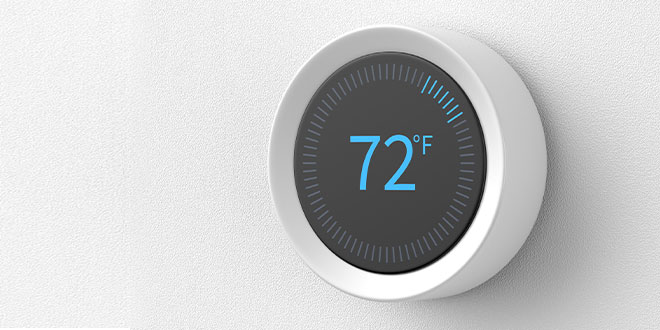
Smart Thermostats
- Connects HVAC system to the internet to enable control and management
- Supports low capacity storage unless video is included
Typical Storage Devices Suggested
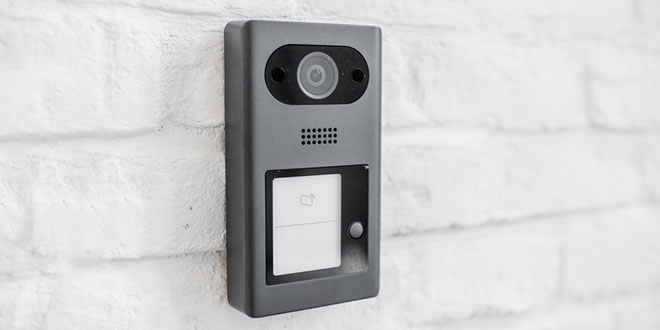
Doorbell Cams
- Watch live video or recorded events from a doorbell
- Manages the camera remotely
- Utilizes burst video recording to support low capacity storage
Typical Storage Devices Suggested
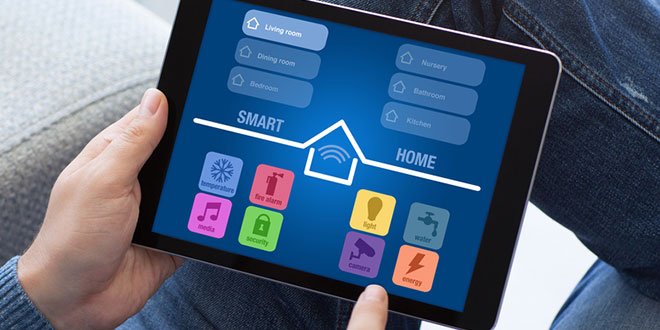
Smart Energy Monitor
- Monitors home energy usage in real-time
- Includes historical trends
- Allows in-home device detection via machine learning algorithms
Typical Storage Devices Suggested

Smart Beds
- Manages user sleep patterns
- Provides tailored sleeping comfort/settings to users
- Configures bed settings
- Provides historical user sleeping data
Typical Storage Devices Suggested
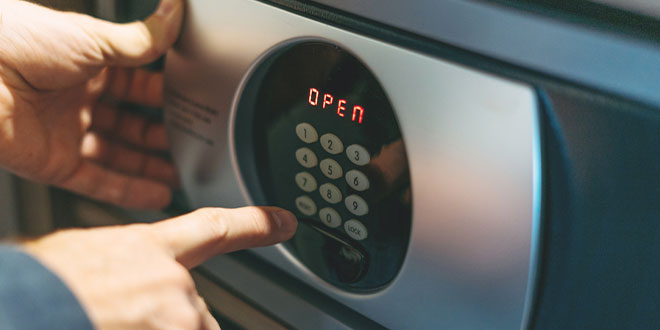
Smart Safes
- Provides secure digital storage for items like medicine
- Controls access to safe via facial or fingerprint recognition
- Sends notifications if safe is tampered or opened too long
Typical Storage Devices Suggested

Remote Pet Care
- Manages pet devices via app
- Receives notifications via app
- Communicates w/pets via app
- Provides 2-way audio/video for treat dispensing, monitoring, entertainment, etc.
Typical Storage Devices Suggested
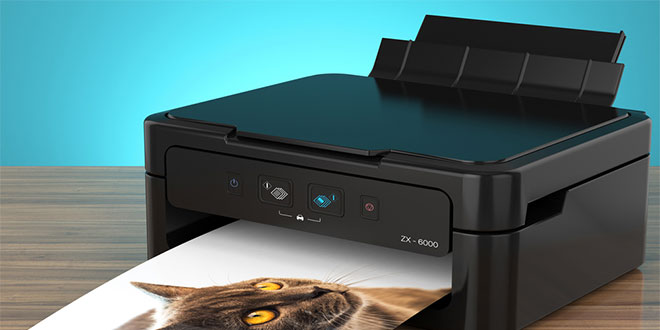
Smart Printing
- Enables remote document printing remotely from anywhere via management app
- Includes smart print functions such as sending automatic notifications for low ink
Typical Storage Devices Suggested

Smart Appliances
- Manages/schedules kitchen- laundry appliance use
- Provides daily task notifications via app
- Typically requires low capacity storage
Typical Storage Devices Suggested
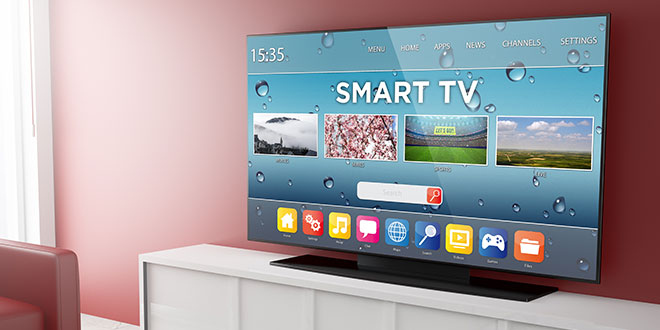
Smart TVs
- Controls/manages internet-video streaming content
- Used for watching live/recorded entertainment
- Enables control of app service
Typical Storage Devices Suggested
Smart City IoT Applications

Smart cities – those that use advanced technologies to provide services and solve problems – offer advantages over living in less-connected areas. Companies building the infrastructure for smart cities, utilize strategically placed IoT devices throughout the city, such as sensors and cameras, to collect data. The end goal is to use this data to improve operational efficiency, public safety, and quality of life.

Restaurant Infotainment
- Features systems that provide information, entertainment and communication in restaurants
- Includes streaming TV, menu displays, music, videos, and photos
- Also for business waiting rooms
Typical Storage Devices Suggested

Corporate Video Conferencing
- Features systems with full HD video/high quality audio for remote conferences
- Connects VC devices, rooms, DBs, whiteboards, and other tools for F2F interactivity
Typical Storage Devices Suggested

Marine Infotainment
- Features systems that provide info, entertainment and communication in boats and other marine vehicles
- Includes GPS, fish finders, charts, etc.
Typical Storage Devices Suggested

Hotel Infotainment
- Features systems that provide guest services, information and entertainment to guests
- Services can include dining/spa options, internet access, TV stations, local shopping, etc.
Typical Storage Devices Suggested
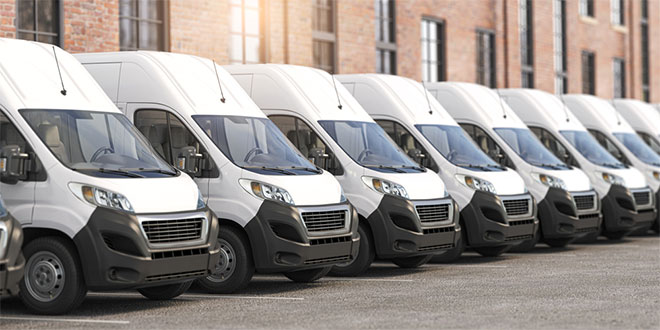
Fleet Management
- Manages/monitors commercial vehicles including cost analysis, efficient routing, etc.
- Systems use GPS, GLONASS or cellular triangulation platforms for tracking/communication
Typical Storage Devices Suggested
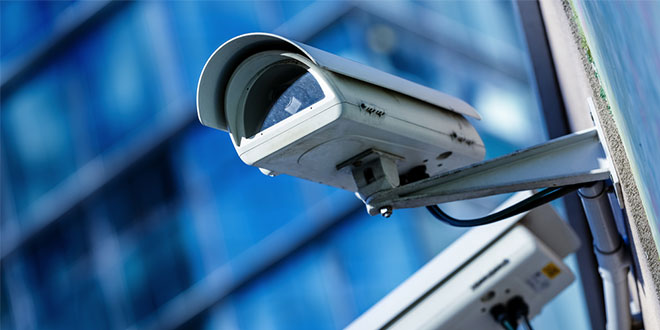
City Surveillance
- Records video 24/7 at 1080p/4K from high rise buildings
- Used for managing traffic flow and security
- Provides high zoom in for facial- recognition, etc.
Typical Storage Devices Suggested
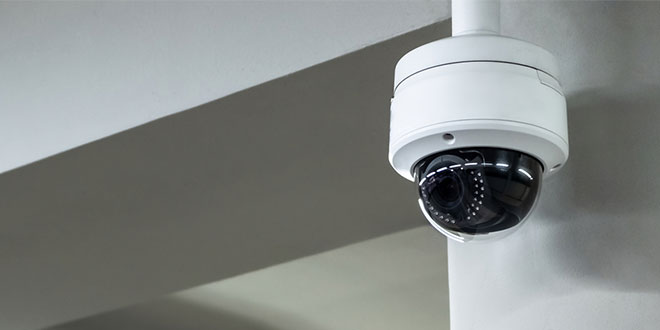
Enterprise Surveillance
- Records video 24/7 at 1080p/4K
- For enterprise, smart building, small company, retail stores, and internal/external usages
- AI provides shopping trends
- Supports various capacity needs
Typical Storage Devices Suggested

Transportation Surveillance
- Features camera systems used in public transportation such as buses/school buses, trains, subways, roadways, etc.
- Combats crime and terrorism
- Improves public safety
Typical Storage Devices Suggested
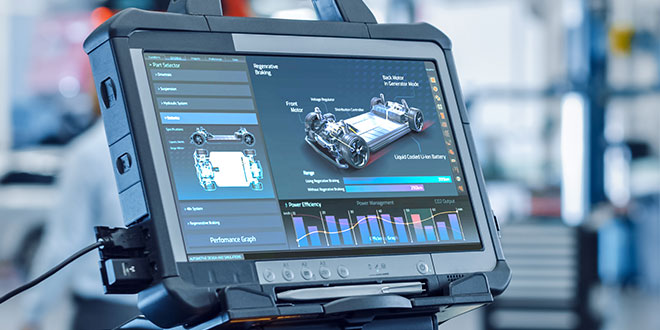
Vehicle Diagnostic Equipment
- Features tools that connect to the OBD connector
- Tools can retrieve error codes, adjust settings/performance, and analyze root issues
Typical Storage Devices Suggested

Smart City Lighting
- Features intelligent lighting systems for buildings, streets, light posts and others
- Manages/monitors/controls energy consumption and lighting performance
Typical Storage Devices Suggested
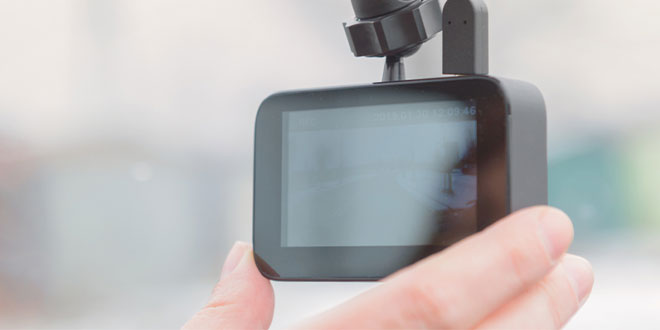
Dash Cams
- Features a video camera with continuous recording
- Dashboard/windshield mount
- Provides immediate warnings
- Records road incidents, traffic, conditions, in real-time etc.
Typical Storage Devices Suggested
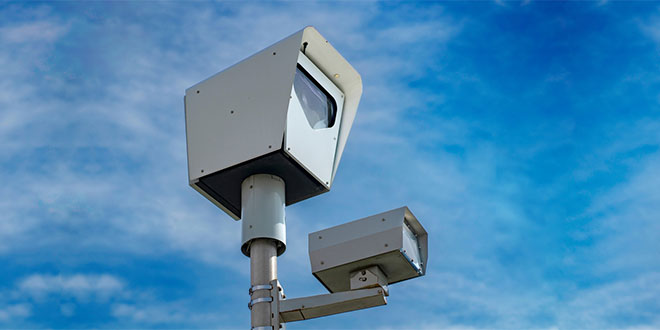
License Plate Surveillance
- Records video 24/7 at 1080p/4K
- For direct license plate capture and recognition with in-motion or still capture
- Used for toll booths, security and crime prevention
Typical Storage Devices Suggested
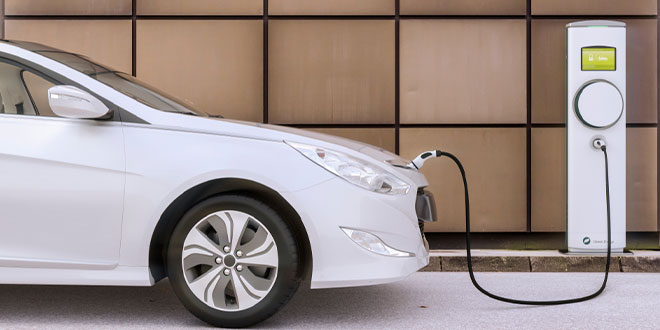
EV Chargers
- Recharges the batteries of Electric Vehicles (EV)
- For at home, at business, or city charging stations
- Supports 2 AC/2 DC plug types relating to most EVs
Typical Storage Devices Suggested

Smart Grid Sensors
- Systems provide real-time parametric smart grid controls
- Used to adjust energy supply to demand
- Reacts to failures and faults
Typical Storage Devices Suggested
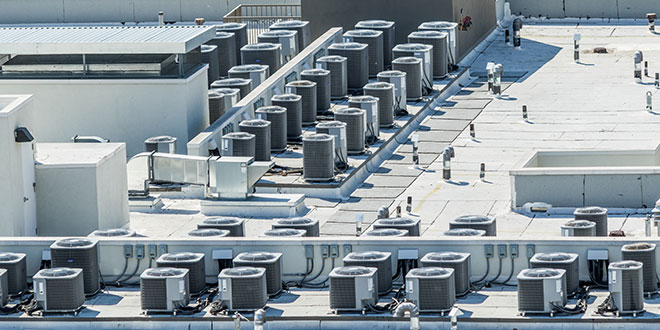
Smart Commercial HVAC
- Manages/controls commercial HVAC systems in city buildings and public edifices
- Integrates with other building automation devices for efficiencies and cost savings
Typical Storage Devices Suggested
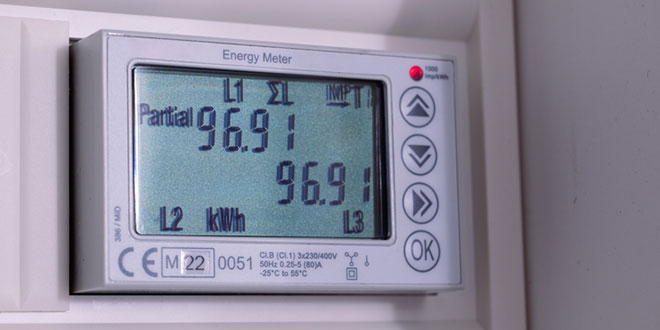
Smart Energy Meter
- Features digital meter for monitoring home and business power consumption
- Monitors/controls electric and gas consumption
- Supports communication protocols
Typical Storage Devices Suggested
Smart Health IoT Applications

From wearable devices to sophisticated AI-driven solutions, data-intensive healthcare applications are transforming the healthcare industry and patient care. The wave of new, smart health solutions would simply not be possible if not for flash memory and the fast, secure, high-density, non-volatile memory it provides.
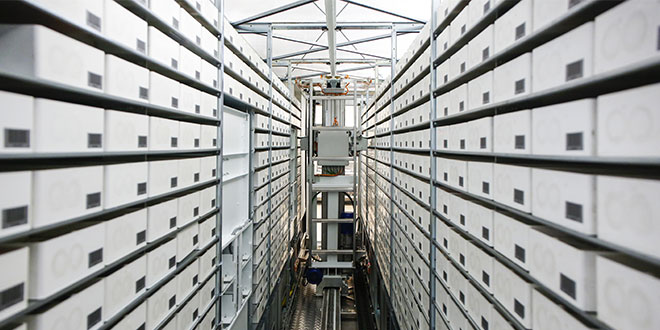
Remote Medicine Dispenser
- Enables remote video care
- Features telehealth device that dispenses medication
- Ensures that the right meds are taken, and at the right time
- Smartphone/tablet managed
Typical Storage Devices Suggested
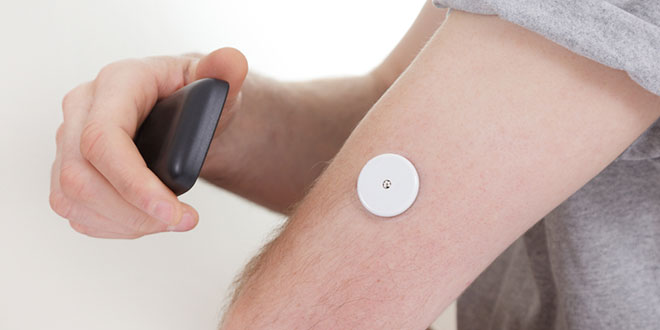
Biometric Sensors
- Monitors biometric functions via body-worn sensing devices
- Wirelessly transmits data to a central hub or smartphone
- Monitors devices via an app
Typical Storage Devices Suggested
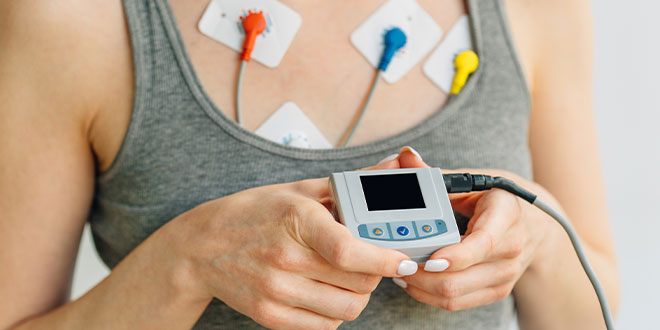
Heart Monitors
- Devices worn to monitor heart data (i.e., ECG)
- Collects/stores/sends data to a remote location for patient, doctor and provider needs
Typical Storage Devices Suggested

Fitness Wearables
- Includes many device options based on shape, size, functions
- Popular uses are GPS tracking, step counting, and calorie burning
- Many have smartphone access
Typical Storage Devices Suggested

Pet Health Diagnostics
- Analyzes animal blood and plasma for vet evaluations
- Shares data in a dashboard for remote doctor/owner meetings
- Data enables quality and performance improvements
Typical Storage Devices Suggested

Infant Monitors
- Features devices/systems that track the health and development of infants
- Records video/biometric stats for parent/doctor consultation
- Smartphone access/monitoring
Typical Storage Devices Suggested

Voice-Controlled Digital Care
- Features mobile voice activated device for remote video care of seniors/elderly
- Always connects to a care pro
- Used for calls, emergency requests, and tracking
Typical Storage Devices Suggested
Industrial IoT Applications
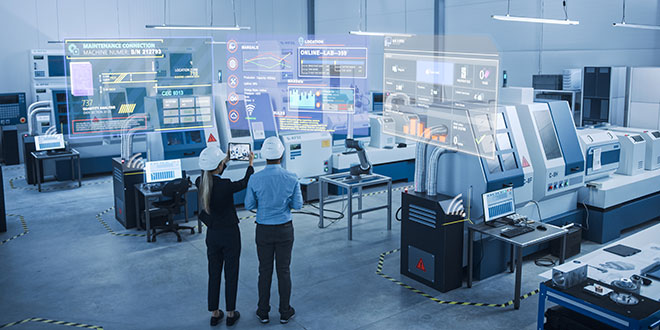
Connecting machines and people together, the promise of the IIoT (Industrial Internet of Things) is to optimize industrial operations. This includes manufacturing, monitoring and supply chain management in the healthcare, aerospace and factory machinery automation segments. Through the IIoT, maintenance schedules can be predicted, factory automation is possible, data can be logged in real time – and much more.
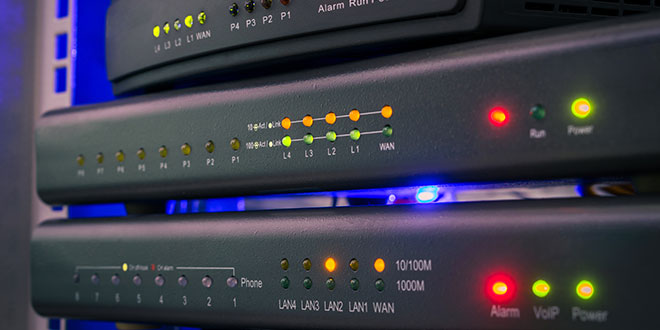
IIoT Gateways
- Features a gateway from the IIoT device to network that provides cloud connectivity
- Enables data aggregation and collection, real-time control, security, filtering, etc.
Typical Storage Devices Suggested
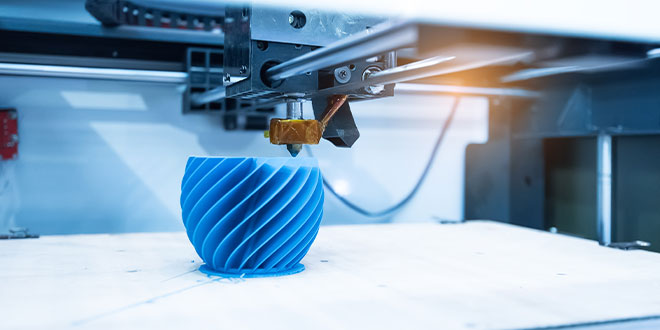
3D Printers
- Manages/controls/fabricates plastic or metal 3D objects via layer printing using CAD software
- Supports various materials such as thermoplastics, metal, resin and ceramics
Typical Storage Devices Suggested
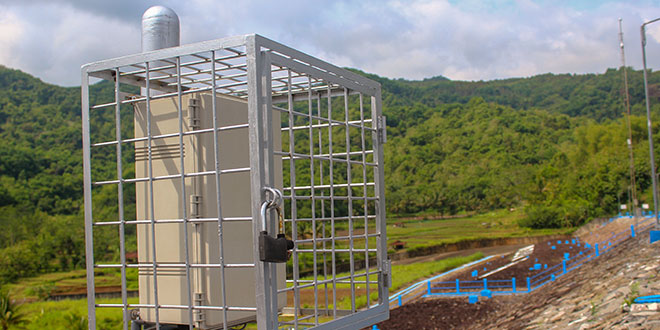
IoT Data Logger
- Captures real-time data for strategic decision making in Industry 4.0 apps and other market segments
- Data is remotely available to users
Typical Storage Devices Suggested
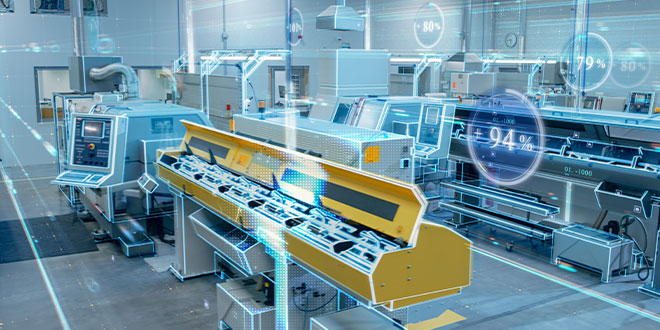
Smart Machine Inspector
- Performs high quality visual inspection of production line and equipment
- Manages/controls/automates many cameras remotely for manufacturing and logistics
Typical Storage Devices Suggested
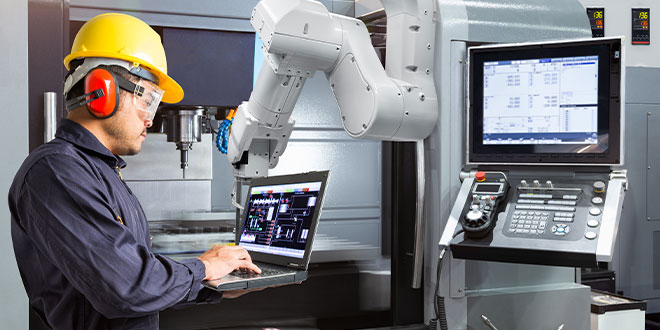
Test Equipments
- Features equipment that verifies proper operation or design criteria
- Can include electronic circuit or part testing, failure analysis, visual inspection, etc.
Typical Storage Devices Suggested
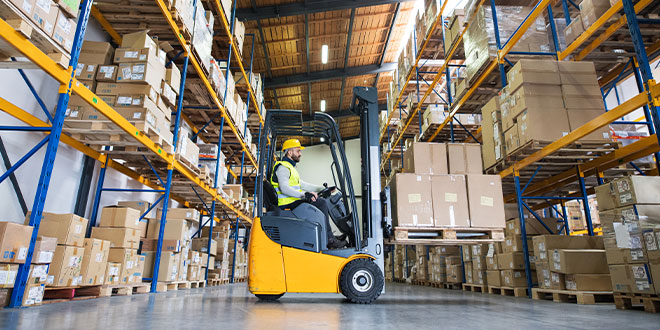
Warehouse Safety
- Features devices (i.e., gloves, belts) that monitor factory worker safety and work trends
- Information sent to a central hub for remote management and analysis
Typical Storage Devices Suggested
Natural Resources IoT Applications
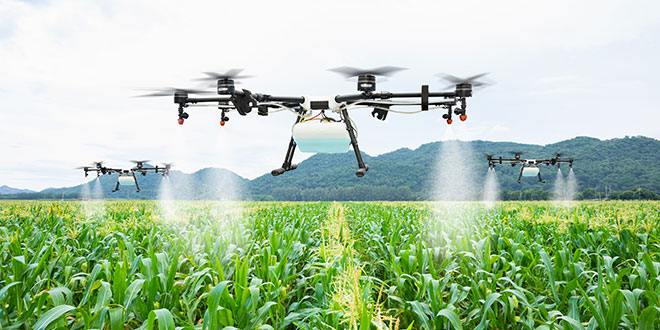
IoT devices are increasingly being used to help make the planet’s natural resources more environmentally sustainable. The data these devices collect and analyze has big implications on important industries such as agriculture, mining, fisheries, forestry and more. When people and resources can interact, gains are made in measuring, understanding, and improving operational efficiencies.

Farm Analytics
- Field sensors generate data 24/7
- Data is sent to a central remote hub
- Farmers can access critical field data to maximize ROI acreage
Typical Storage Devices Suggested

Livestock Medication
- Features devices that remotely deliver accurate doses of medication to farm animals and livestock
- Data records maintained for each animal-remotely accessed
Typical Storage Devices Suggested

Mining Surveillance
- Features 24/7 camera systems and infrared detectors that monitor combustible gases
- Digital display aligns camera
- Data sent to a remote device for analysis
Typical Storage Devices Suggested
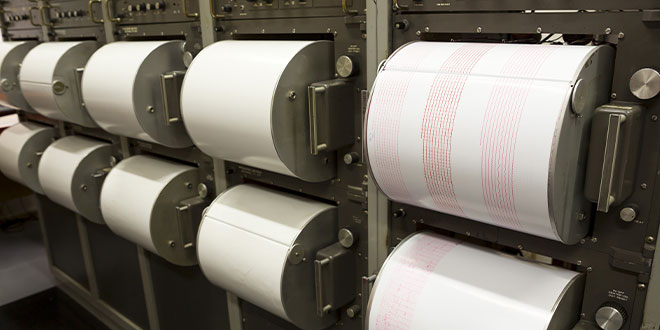
Seismic Sensors
- Features sensors placed in areas to monitor seismic and environmental activity
- Data is collected and sent to a central hub for evaluation and analysis
Typical Storage Devices Suggested
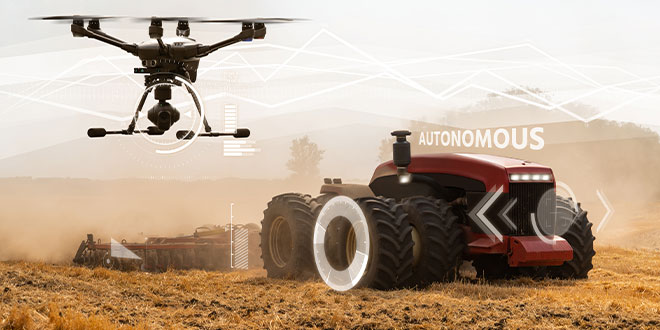
Smart Tractor
- Features cameras/sensors on tractors/agricultural vehicles
- Used to improve planting, harvesting, and other activities
- Captured data used for analysis
Typical Storage Devices Suggested
Webinar
In this webinar you’ll learn:
- The history of UFS, as well as current market adoption trends
- How UFS differs from e-MMC, and the advantages it delivers
- The ways that UFS makes a difference in real-life scenarios, including IoT and Industrial applications such as drones and security cameras
- Details about KIOXIA’s broad lineup of consumer and automotive grade UFS devices
Question/Inquiry
- Product image may represent a design model.
- Definition of capacity: KIOXIA Corporation defines a megabyte (MB) as 1,000,000 bytes, a gigabyte (GB) as 1,000,000,000 bytes and a terabyte (TB) as 1,000,000,000,000 bytes. A computer operating system, however, reports storage capacity using powers of 2 for the definition of 1GB = 2^30 = 1,073,741,824 bytes and therefore shows less storage capacity. Available storage capacity (including examples of various media files) will vary based on file size, formatting, settings, software and operating system, such as Microsoft Operating System and/or pre-installed software applications, or media content. Actual formatted capacity may vary.
- PCIe is a registered trademark of PCI-SIG.
- NVMe is a registered or unregistered mark of NVM Express, Inc. in the United States and other countries.
- Other company names, product names, and service names may be trademarks of their respective companies.

